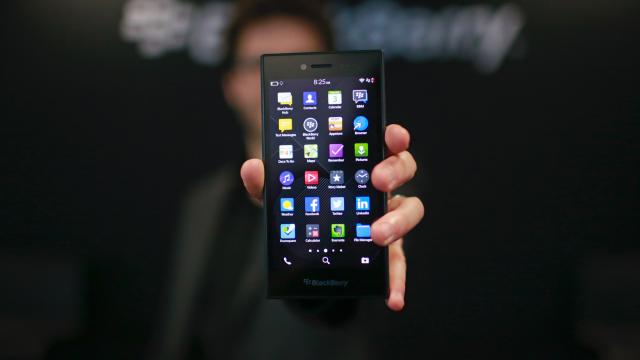How can such a successful company as Blackberry once was, be at such a low nowadays?
Once Blackberry had a 50% market share in the smartphone industry, now that share is less than 1 %. Blackberry is the perfect example of disruptive innovation. The company that introduced the Blackberry in 1998 became a $20 billion company from nothing to less than a decade. Then four to five years later, it was back down to a $3 billion company.
If we look at Blackberry it’s not only a story about a disruptive innovation, but also a technology that quickly entered the consumer market as the smartphones of Blackberry did. Blackberry was the innovator at that point. You could even compare it with the upcoming of the television in the 1950s. Never before was there such a big growth, so quickly. They went form zero to more than 50%. When Blackberry first started they knew exactly what the customers needed. Blackberry was deeply connected with the business community. They came in from a different point of view, they changed the rules of the game. (Tsai, 2015)
So how did a company like Blackberry get to such a low point, when they were the innovators of the smartphone market. It has everything to do with innovation. When you don’t keep moving in markets like these, you will end up losing. It’s always important to be aware of the needs in the market and of course the timing. When a company is growing so fast, it’s hard to still keep both feed on the ground and don’t get ahead of the success. Blackberry was the victim of several unfortunate events. From the three-day outage in 2009 till the upcoming of other phone, like the iPhone.
Blackberry is now at a point in time where they decided to change their strategy, they are not going to make hardware. They now just want to focus on making software, instead of the complete smartphone.
The race of the smartphone market is faster than ever. Blackberry was just not fast enough to keep track of their competitors. It’s so difficult to stay ahead. The leaders of today, are the followers of tomorrow.
http://2machines.com/184127/


Hey Siobhan!
Thanks for your interesting blogpost on Blackberry. As I am strongly interested in disruptive innovation (read my blogpost on Polaroid, perhaps?), I felt the urge to respond.
I partially agree on your stance towards the reason why Blackberry got ‘disrupted’. For sure, they did get disrupted. However, I do not think they are the victim of disruptive innovation. Interestingly, the Blackberry case has a lot in common with what has happened to Polaroid. Let me explain.
Blackberry indeed was very successfull with their smartphones. The firm had a strong idea of how they wanted to serve the market. Yet, I feel this was at the center of their downfall. They believed so strongly in telephones that sported QWERTY-keyboards and they felt their approach to messaging was best compared to Whatsapp and the alternatives Google’s Android and Apple’s iPhone offered. Because of their strong belief, the firm failed to respond adequately. This is what can be called customer inertia/resource dependece. Blackberry probably thought it served a special part of the market, as their phones differed from competitors’ offerings. By not changing their product lines too much, Blackberry thought they could conserve their revenue streams and keep their customers. Boy, were they wrong…
This story is largely applicable to Polaroid, as I said. Both firms had strong ideas on how to and how not to serve the market. Yet, the funny thing is that both firms were technically very capable of developing potentially disruptive innovations. Blackberry, perhaps, could have avoided their downfall by converting to an ambidextrous organization: focus on existing and emerging technologies at the same time, in different departments. That way, Blackberry could have served current customers whilst also developing new technologies that could substitute their older ones in the future. This might have prevented the downfall, as they could provide an alternative then..
Moreover, as I outline in my blogpost concerning Polaroid, vision communication could be they way to go for the leaders of today to still be the leaders of tomorrow. In the end, it’s all about persuading and educating the consumer on what you think should be done. The firms that mold consumers’ preferences best, will always win.